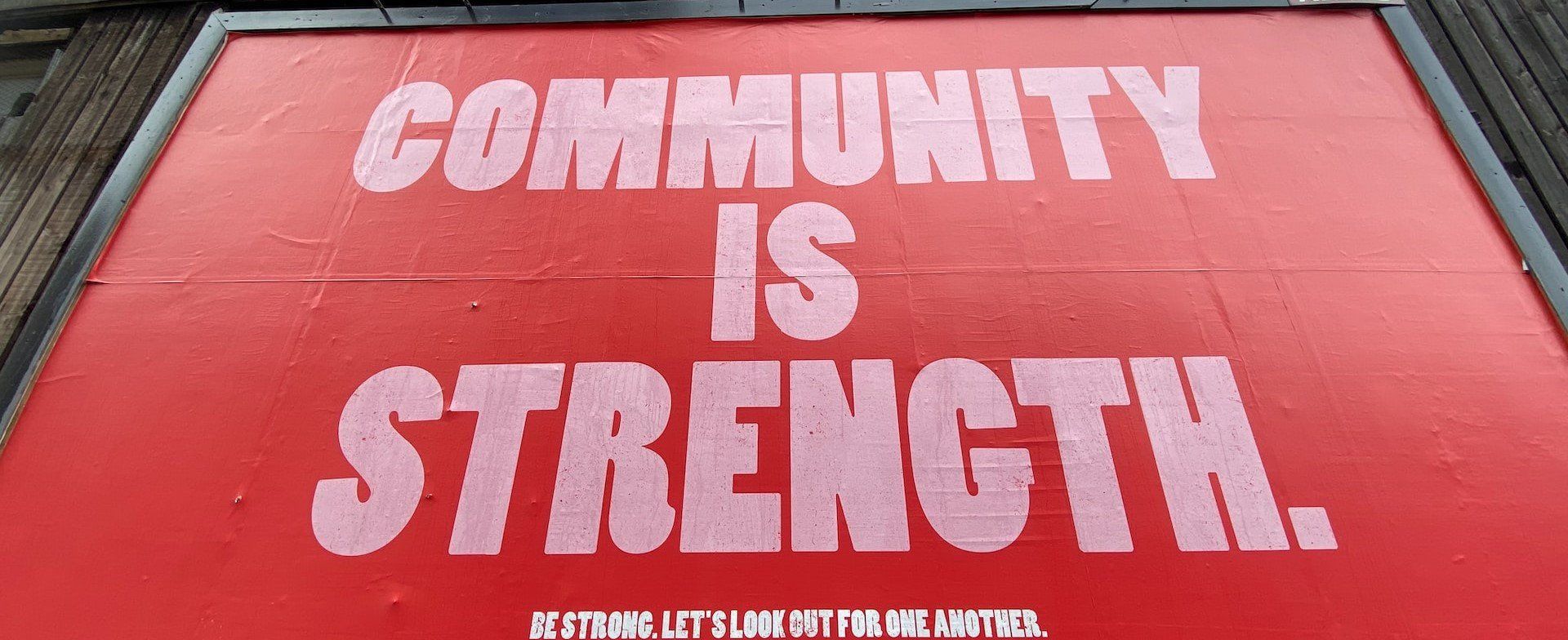Learn more about my book "The Courageous Ask"
The Proactive Approach to Prevent a Leadership Fall Starts Here
A leadership fall, in nearly every case, can be prevented. Hope and confidence in prevention are very strong when a leader and organization invest in the use of a proactive approach.
Preventing a fall is not a popular topic. No one likes to talk about it. If you talk about it you need to delve into a lot of difficult, sometimes negative topics- topics that go to the very core of who we are. And that is not comfortable. But it must be done because nonprofit, especially Christian nonprofit, leaders are falling all around us.
I have interviewed tons of leaders on the topic. It is the rare leader that wants to talk about the possibility of a fall because they want to maintain the facade that they have everything under control. It's always an issue that others deal with, but not them. Their fear is that if they show a weakness it may damage them or their organization in some way. But once I get beyond that veneer, boy do they ever want to talk about it.
We do need to talk about the possibility of a fall in the lives of our leaders. More importantly we need to talk about how to prevent a fall.
It's time to start the conversation in our nonprofits.
This article forms
a transition. From the beginning of my efforts at writing, I have recognized that there is a need for transitions. Most non-fiction books have to lay a foundation on their topic before they get to the meat of that topic.
The foundation is not the reason the person picked up the book. The meat is.
In fact, sometimes the laying of the foundation of a book can leave a sour taste in the mouth of a reader, as the problem the non-fiction book is attempting to solve is being defined. But for me, once I read the meat, I always recognize the need for the foundation. I’m sure you have experienced this.
A series of articles can be the same way.
The foundation of this series of articles included: 1. A simple introduction to the series. 2. Answers to the questions “Can a leadership fall happen to you or your organization, and where does that fall end up?” 3. The role human nature plays in the fall of a nonprofit leader. 4. Leadership struggles that can tempt a leader down the wrong path. 5. Board struggles that can contribute to the fall of nonprofit leaders.
All of these articles can be accessed by going to the
blog section of my website.
All of that to say that you are now entering the meat of my topic, and the subtitle of my book which will be released in September- The Courageous Ask: A Proactive Approach to Prevent the Fall of Christian Nonprofit Leaders.
Now, let’s find some hope.
(This article is the ninth in a series that focuses on starting a conversation centered on preventing the fall of nonprofit leaders. I write it from a Christian perspective, but all leaders will benefit. Be sure to sign up to receive these articles via email every Tuesday at briankreeger.com. In addition to receiving these articles two days before they hit social media, you will receive the Introduction and the Appendix (My story) to my upcoming book, The Courageous Ask: A Proactive Approach to Prevent the Fall of Christian Nonprofit Leaders.)
Once a fall starts,
it is hard to prevent destruction. As a leader falls, there will be direct and collateral damage. There must be a conscious plan in place to prevent it from happening.
It is so much easier to be proactive than to bring a person back. But many times organizations realize this too late.
Take a look
at the picture of the footbridge embedded to the right. This picture captures the essence and key components of a proactive approach in preventing the fall of Christian nonprofit leaders.
Please allow me to describe what I see when I apply the sight of this footbridge to our goal in preventing that fall.
The leader is at the beginning of the footbridge. There is a clear path to the desired result. A Christian would refer to this as a calling. That result, in the life of the Christian nonprofit leader, is defined in the call they received. This takes many forms.
A for-profit leader will have a particular goal in mind, usually focused on the successful, continued profitability of a company.
All the leader has to do is walk in the center of that path. Again, it is a clear path. Many do it well and reach their desired goal at the end of the footbridge without a fatal impediment.
But, as discussed in past articles, leaders are human. Most leaders will find impediments along the way, and sometimes they are fatal. Those barriers many times are based in their own humanness.
They seek to make the leader stumble, perhaps leading to a horrific fall over the edge of the footbridge into personal and organizational disaster.
I don’t see those impediments in the picture, and I’ll bet you don’t either. Isn’t that how it is for the leader and those around the leader most times? They don’t see the dangers, or they ignore them until they are facing an almost certain fall?
For the Christian leader, they are aware of the supernatural battles happening all around them. But they cannot be seen, so they may act like they are not there. These difficulties, impediments, and dangers cause a leader to barely see the other side, where their goal still lies.
Some leaders won’t ask for help when they begin to see the stumbling blocks that can prevent them from achieving the goal initially set before them. They may feel as if they have no one to share those impediments with. They may not allow anyone close enough to them to see the difficulties in order to walk along with them.
They somehow become blinded, or even deluded, in their thinking.
While considering the
tremendous amount of hidden temptations and impediments all around the leader, in this picture I also see an incredible amount of hope.
Do you see it? It’s clear as day.
Look at the height and strength of those side rails that provide hope. Those side rails are chain-link fence, strengthened with a metal rail along the top, and one at the bottom.
These side rails are the proactive approach in preventing the fall of nonprofit leaders.
Besides galvanized steel wire, what makes up the composition of the chain-link fence? The chain-link fence in this orchestration comprises those people or groups closest to the leader: their family, their accountability structure, their parishioner’s, their colleagues, their constituency, and the community- those who can save the leader from falling when they feel powerless to do so.
Yes, the leader themself is accountable for their own actions and is responsible for keeping themselves in the center of the footbridge. Again, many do it well. But it is rare that a leader won’t need the guidance and support of the side rails from time to time.
The goal of the side rails should be to keep that leader on the footbridge and away from danger, even danger the leader seems to instigate.
The side rails should do the best job they can to heighten and strengthen themselves to prevent the fall of a nonprofit leader. They may need to heighten their sensitivity to what is going on in the life of their leader. They may need to strengthen their relationship with the leader.
Unfortunately, sometimes, by no fault of their own, the side rails are not high enough or strong enough to prevent the fall, and they can’t be. On rare occasions, a leader simply cannot be saved from themselves. We must acknowledge this. But most times with the proper use of a proactive approach, there is no threat of a fall.
Yes, there is great hope. Everyone reading this is part of that hope. A hope that strengthens the weak when they are falling. A hope that can be applied to everyone around you. Nonprofit leaders need a special measure of that hope.
The next several
articles are about action. Action based on the recognition of the other perspectives you gained in the previous articles.
Through a tough examination of yourself and the organization you are involved in, you have recognized that it is entirely possible that a fall could happen in your nonprofit. You previously may have seen cracks, but did not realize what those cracks could turn into.
You may now recognize that the indicators you have been seeing and thinking about are real, needing to be talked about -maybe acted upon- before there is a disaster.
The problems that lead to a nonprofit leadership fall have now been defined. You are able to relate to one of the roles I used in the previous articles and have also gained a new perspective on those that you are familiar with, but do not live in. You recognize that simple human nature has its own role.
You’ve really been touched, and recognize that the love of your organization must force you to look at things from a different reality, one that must manifest in action. Without action, your organization could be damaged, or at least placed in peril.
Executive, it’s time
to examine yourself,
Courageously Ask difficult questions, and build walls and hedges of protection where they need to be built.
Accountability structure, it’s not good enough to care about your executive; you must make sure they know it, and make it part of your management.
And, community, it’s time to reach out and support.
All, it’s time to make decisions.
No longer are you able to expect someone else to take care of what you have been watching or are concerned about.
I try to remember what author Nancy Duarte wrote, “Sometimes all it takes is a kind word of encouragement to get your heroes back on the right path.”1
Hey, is there some reason we can't all share that word? I know I need to be the recipient sometimes. It can make a huge difference at the right time.
Now it’s time to really take this thing seriously. It’s time to take action.
This set of articles in the series will look at particular roles that can be proactive in the prevention of the fall of a nonprofit leader. Next week I will begin with the leader themselves.
Be sure to sign up to receive these articles via email every Tuesday at briankreeger.com. In addition to receiving these articles two days before they hit social media, you will receive the Introduction and the Appendix (My Story) to my upcoming book, The Courageous Ask: A Proactive Approach to Prevent the Fall of Christian Nonprofit Leaders.
1Nancy Duarte, “Like Yoda You Must Be,” Duarte, October 22, 2015, https://www.duarte.com/presentation-skills-resources/like-yoda-you-must-be-2/.
Brian@briankreeger.com
#Leadership Fall #Leadership Survival #Nonprofit Relationships #Proactive Approach #Leadership Struggles #Leadership Battles #Supernatural Battle
#Leadership Hope






